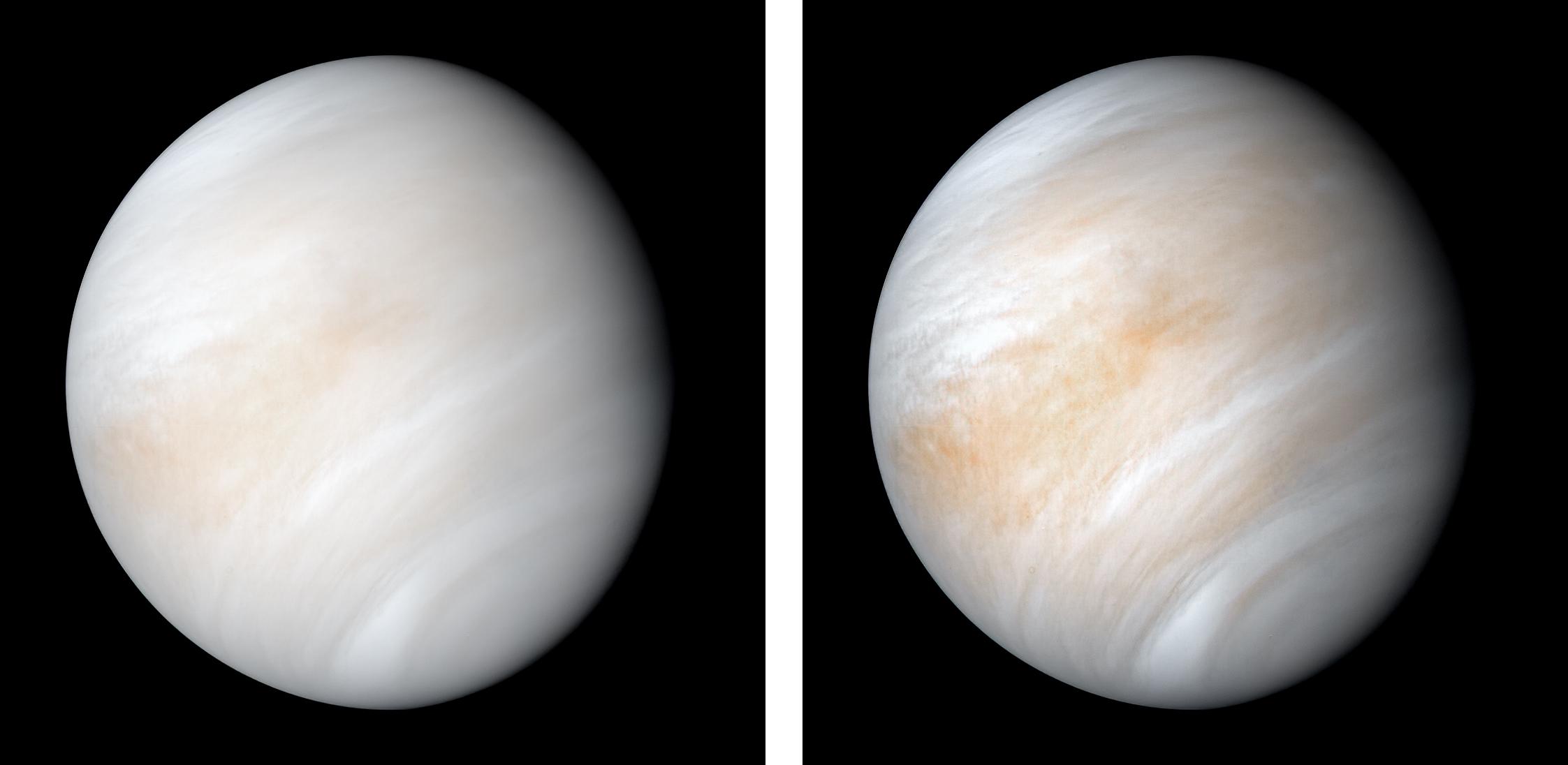Image: Venus as seen by Mariner 10 in 1974 (details here). Credit: NASA/JPL-Caltech
Venus, with its surface permanently hidden from our prying eyes by the veil of sulfuric acid clouds, is a somewhat mysterious planet. At first glance it appears to be quite similar to the Earth: the two planets have similar mass, size, density and surface gravity. But that’s where the similarities end. While the Earth is a paradise for life, Venus is a world of extremes, a hellscape you might never want to set your foot on.
That has not always been the case. Computer models suggest that early in its history Venus was much milder and wetter than it is today. The planet might have even had shallow liquid water oceans, just like today’s Earth. So what happened to Venus that it turned into a world where it rains sulphuric acid, a planet with a surface temperature of 462oC and a carbon dioxide atmosphere 90 times thicker than the Earth’s? We don’t know!
A question of why the Earth and Venus, two seemingly similar planets, evolved so differently is a compelling one. If we figure out the answer, we will not only learn more about Venus (and the Earth!), but also narrow down what exactly we need to look for in our search for potentially habitable worlds.
Exploring the planet with robots
So why don’t we explore Venus more? At the dawn of space exploration Venus was the first planet we sent our probes to. The majority of Venus-bound missions were launched in the 60s – 80s by NASA and the Soviet Union. The Soviets achieved a number of impressive ‘firsts’, such as:
- The first spacecraft to enter another planet’s atmosphere and send data back to Earth (Venera 4; launched on June 12, 1967)
- The first soft landing on another planet (Venera 7; August 17, 1970)
- The first colour images of Venusian surface (Venera 13; launched on October 30,1981)
The Japanese Venus Climate Orbiter Akatsuki, launched in 2010, is currently the only spacecraft in orbit around Venus. Another, the European BepiColombo, will briefly visit Venus twice en route to Mercury and collect some precious data on the way.
But that’s not nearly enough! Look at our other neighbour, Mars. Right now 8 spacecraft explore the Red Planet from orbit and two NASA rovers – from the surface. A Chinese rover Tianwen-1 is due to land on Mars in the middle of May 2021 and a European rover, Rosalind Franklin (previously ExoMars), will launch in September 2022. Undoubtedly, more robotic (and one day even human) explorers will follow.
The quest for life in the Universe and other mysteries
It looks like Mars gets a lot of scientific and public attention, while Venus is being left out. Unfortunately, this is hardly surprising. Humanity has their eyes on the ‘possibly habitable waterworlds’ (read Mars, Europa, Enceladus etc) and a bone-dry scorching hot Venus is not the planet that is most likely to provide us with the ‘alien found’ headlines. Although the conditions in the Venusian clouds are not as brutal as on the surface (at an altitude of about 50 kilometers they are quite Earth-like), most scientists agree that finding life on this world would be rather unlikely.
On September 14th 2021 the Royal Astronomical Society made the announcement of the discovery of a possibly-biomarker gas Phosphine in the clouds of Venus. Sadly, the numerous follow-up observations and original data re-analysis seem to disprove the discovery claim. Nope, still no aliens. *Sigh*.
But aliens or no aliens, there are many questions about the hottest planet of the Solar System that, to date, remain unanswered.
Why is the planet rotating so slowly and in the opposite direction from the other planets? How come the upper atmosphere of Venus exhibits superrotation (it spins 60 times faster than the planet itself)? Why doesn’t Venus generate its own magnetic field? When and how did the planet’s climate change?
Are there any advantages of going to Venus instead of Mars?
There is no denying: Venus is a difficult planet to explore. But scientists and space engineers are up for a challenge. Several mission concepts are being developed right now including *gasp* a manned mission!
In some ways going to Venus might actually be easier than visiting Mars. Some of the advantages include shorter journey and the Earth-like gravity. If humans are ever to visit our hot neighbour, the planet’s thick atmosphere will protect them from the harmful radiation. Of course, the astronauts will have to float in the middle atmosphere rather than wander about the surface, but, hey, wouldn’t that be fun?
What do you think about Venus exploration? Let us know in the comments below!
To book an Inflatable Planetarium show or one our awesome Astronomy Talks with Wonderdome please visit our web page wonderdome.co.uk

